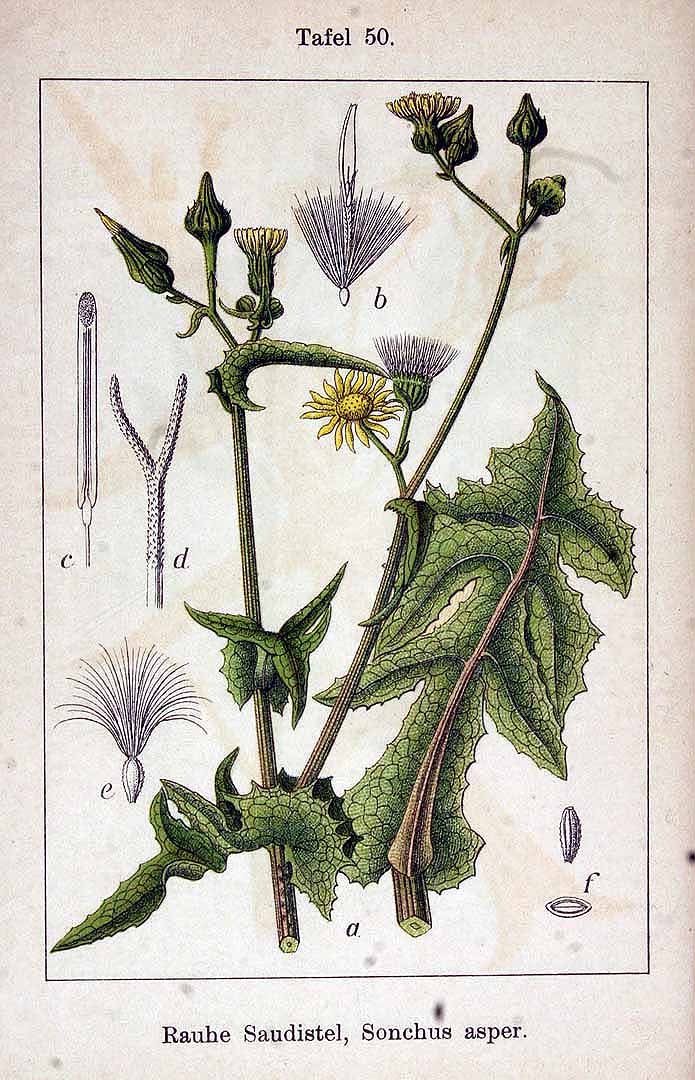! Nouveau site ici !
Vita > Plantae > Magnoliophyta > Magnoliopsida > Asterales >
Asteraceae > Sonchus
Sonchus asper
(Laiteron épineux)



 | ** - *
| ** - *
Vita > Plantae > Magnoliophyta > Magnoliopsida > Asterales >
Asteraceae > Sonchus
Sonchus asper
(Laiteron épineux)

Une herbe annuelle dressée. Il atteint 1 m de haut. Les tiges sont creuses. Il y a de la sève laiteuse lorsque les tiges sont coupées. Il y a des glandes sur les parties supérieures. Les feuilles mesurent 5... (traduction automatique)
→suite
⬀
Le  donne accès au menu
donne accès au menu (c'est votre point de repère) 😊 ;
En dessous vous avez la classification, à partir de la vie (Vita, premier rang) jusqu'à la classe au dessus de la plante, dont vous trouvez ensuite le nom scientifique/botanique (latin) puis le nom commun (français), le cas échéant ;
C'est aussi un lien vers la fiche complète (tout comme la ✖, en bas à droite, et le +, en dessous de la description) ;
Vient alors l'illustration (ou ce qui la remplace, en attendant), la comestibilité :
Et en bas
⬂

![Illustration Sonchus asper, Par Smith, J.E., English botany, or coloured figures of British plants, ed. 3 [B] [J.E. Sowerby et al] (1863-1899) Engl. Bot., ed. 3 vol. 5 (1866) t. 812, via plantillustrations Illustration Sonchus asper, Par Smith, J.E., English botany, or coloured figures of British plants, ed. 3 [B] [J.E. Sowerby et al] (1863-1899) Engl. Bot., ed. 3 vol. 5 (1866) t. 812, via plantillustrations](../inc/images/illustrations/sonchus_asper.jpg )



